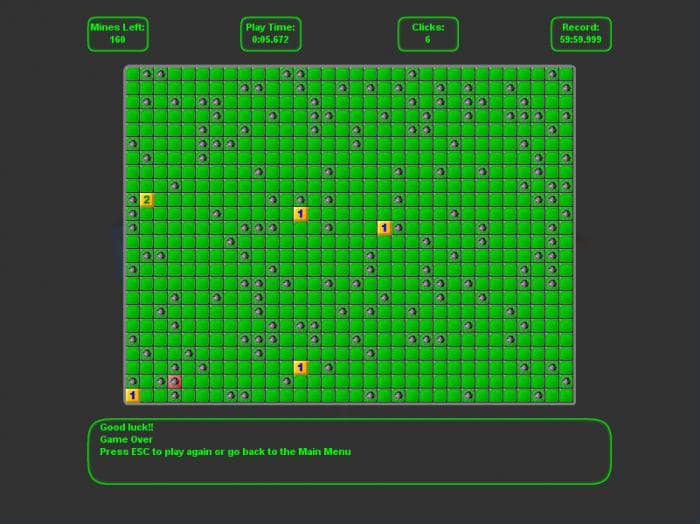


To help the player avoid hitting a mine, the location of a suspected mine can be marked by flagging it with the right mouse button however, if a player is unsure if a square is safe or not, they can tag it with a question mark (?). Some squares are blank while others contain numbers (from 1 to 8), with each number being the number of mines adjacent to the uncovered square. Clicking on the game board will reveal what is hidden underneath the chosen square or squares (a large number of blank squares may be revealed in one go if they are adjacent to each other). The location of most mines is discovered through a logical process, but some require guessing, usually with a 50-50 chance of being correct. The goal of Minesweeper is to uncover all the squares on a grid that do not contain mines without being "blown up" by clicking on a square with a mine underneath. In Windows 8 and later the game is not included with a fresh Windows install, but Microsoft Studios has published an updated version of it, developed by Arkadium, on Microsoft Store. Microsoft Minesweeper was included without major changes in all subsequent Windows releases until Windows Vista, at which time an updated version by Oberon Media replaced it. First officially released as part of the Microsoft Entertainment Pack 1 in 1990, it was first included in the standard install of Windows 3.1 in 1992, replacing Reversi from Windows 3.0. Microsoft Minesweeper (formerly just Minesweeper, and also known as Flower Field) is a minesweeper-type video game created by Curt Johnson, originally for IBM's OS/2, that was ported to Microsoft Windows by Robert Donner, both Microsoft employees at the time. Windows NT 3.1 through Windows 7, excluding Windows Server.


 0 kommentar(er)
0 kommentar(er)
